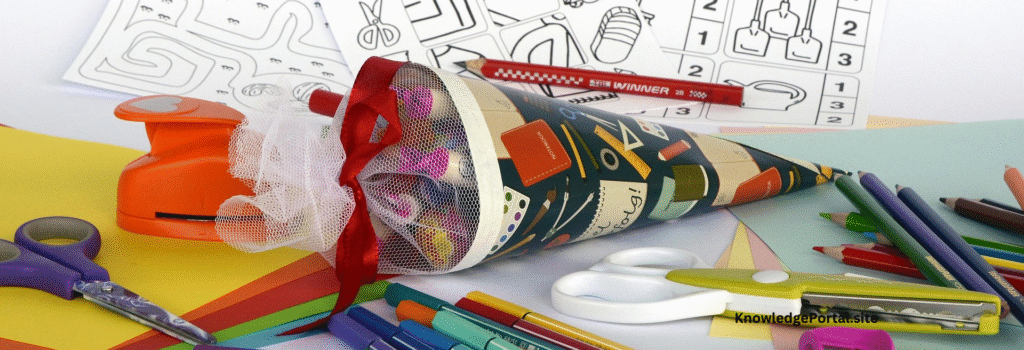Learning doesn’t have to be limited in today’s digital era to textbooks and worksheets. For second graders, educational games are changing how they interact with important academic disciplines including math, reading, science, and social studies. These games promote a passion of learning by mixing interactive play with fundamental knowledge, therefore strengthening vital skills.
The advantages of educational games for second graders, top subjects taught, kinds of games accessible, and the finest online platforms and tools parents and teachers can utilize are investigated in this paper.
Why Would Second Graders Need Educational Games?
Children’s growth depends critically on second grade, when they expand on the fundamental abilities they gained in kindergarten and first school. They study more on their own and are exposed to more difficult ideas in writing, math operations, scientific observation, and reading comprehension.
Including instructional games into their study schedule has the following advantages:
1. enhanced engagement is:
Sometimes repetitious traditional teaching approaches cause young children to lose interest. Interactive and fascinating educational games inspire regular participation by means of lessons.
2. Enhancement of Important Skills
Games give second graders many chances for practice and repetition, which enables them to master fundamental ideas in math, language arts, and other disciplines.
3. Promoting critical thought
Well-made instructional games push kids to make decisions, solve issues, and use critical thinking—qualities absolutely essential for academic achievement.
4. Learning Self-Pacedly
Using instructional games, students can advance when ready or return to tackle hard areas at their own leisure.
5. Safe classroom
Usually offering a risk-free environment for trial and error, games let mistakes be a natural part of the learning process instead than something to be punished.
Core Subjects Covered in Educational Games for Second Graders
Most educational games for second graders focus on reinforcing subjects taught in school. Here’s a breakdown of how they support each subject area:
1. Math Games
Math can be intimidating for many students, but fun, interactive games can turn it into a favorite subject. These games often cover:
- Addition and subtraction within 1000
- Multiplication basics
- Telling time
- Measuring lengths
- Geometry concepts like shapes and symmetry
Popular math games include interactive puzzles, number line challenges, and timed quizzes that reward speed and accuracy.
2. Reading and Language Arts Games
Second graders are expected to improve their reading fluency, comprehension, and vocabulary. Educational games in this category focus on:
- Sentence structure and grammar
- Vocabulary building
- Reading comprehension
- Spelling and phonics
- Synonyms, antonyms, and homophones
These games often incorporate stories, sentence rearrangement puzzles, and word-matching activities.
3. Science Games
Science games for second graders introduce basic scientific principles in a fun and exploratory manner. Topics typically include:
- Life cycles of animals and plants
- Weather and seasons
- Simple machines
- Earth and space
- States of matter
Interactive simulations and drag-and-drop labeling games help make abstract science concepts concrete and engaging.
4. Social Studies Games
Social studies educational games help second graders learn about communities, history, geography, and culture. Key topics include:
- Local and world geography
- Basic economics (needs vs. wants)
- Historical figures
- Community helpers and responsibilities
- Cultural diversity
These games often include map exploration, timeline creation, and scenario-based role playing.
Kinds of Learning Games for Second Graders
There are various types of educational games, each with a designated learning style and use:
1. Digital Games
Usually, one access these from computers, tablets, or cellphones. To keep children interested, they provide a great variety of images, noises, and levels. Apps, browser-based games, and downloaded instructional materials are a few examples.
2. Playing Board Games
While stressing academic ideas, board games such as “Scrabble Junior” or “Math Bingo” help develop cognitive and social abilities.
3. Printable Interventions
At home or in the classroom, printable worksheets and card games are low-cost, simple tools. Often emphasizing math facts, word construction, or scientific sorting exercises, these also cover
4. Games for Physical Activities
Incorporating motion aids kinesthetic learners. Hopscotch spelling or math scavenger hunts mix learning with exercise.
Top Online Educational Game Platforms
These are some of the most reliable and well-known websites with excellent second grader educational games available:
1. ABCmouse.
For ages 2–8, ABCmouse provides an entire online curriculum. Second graders can find math, reading, and science activities easily available since their educational games are arranged by grade and subject.
2. Stellar fall-off
Starfall, well-known for its robust phonics-based reading program, now offers second graders’ specific math and language arts games. Independent use of the interface is safe and easy.
3. Education.com
There are hundreds of games on this site especially arranged by grade and theme. Games covering math, grammar, spelling, and more abound from their second grade offerings.
4. PBS Kids
PBS Kids offers free instructional games with Curious George and Arthur, two of their beloved characters. Through narrative, the games support learning by matching with common core criteria.
5. Excellence
Students advance through levels in the free, fantasy-based math game Prodigy by solving arithmetic questions. Its adaptability guarantees every youngster works at the appropriate difficulty level.
6.The Funbrain
Funbrain provides a large range of second-grade reading, arithmetic, and logical games for use in the classroom. Young brains are kept interested by their vibrant images and participatory attitude.
Effective Use of Educational Games by Teachers and Parents
Here are some best practices for parents and teachers to maximize second graders’ use of instructional games:
1. Clearly Establish Objectives
Choose games that target the academic skills your child needs to work on, knowing what those are. If a learner finds multiplication difficult, for instance, emphasize activities tailored to math.
2. Time on Balance Screens
While digital games are excellent teaching aids, balance is essential. Match hands-on or physical activities with alternate screen-based games.
3. Track Advancement.
Many systems include tools for tracking advancement. Check your child’s performance using these; then, change your approach.
4.Promote play-based learning.
Let young players investigate games at their own speed. Steer clear of making them a task; enjoyment is what motivates involvement and memory.
5. Call on siblings or peers.
Many games are available for pairs or groups. Cooperation in play develops communication and teamwork.
In essence
Second graders’ educational games are more than simply amusement; they are effective instruments that improve cognitive and social abilities as well as academic achievement. There is something for every learning style among the many disciplines, platforms, and game kinds accessible.
Including instructional games into a second grader’s schedule will help them to find learning more relevant and fun whether you are a teacher trying to augment classroom instruction or a parent seeking interesting homework substitutes.
Selecting age-appropriate, curriculum-aligned games helps youngsters develop a strong basis for lifetime learning rather than only provide entertainment value..